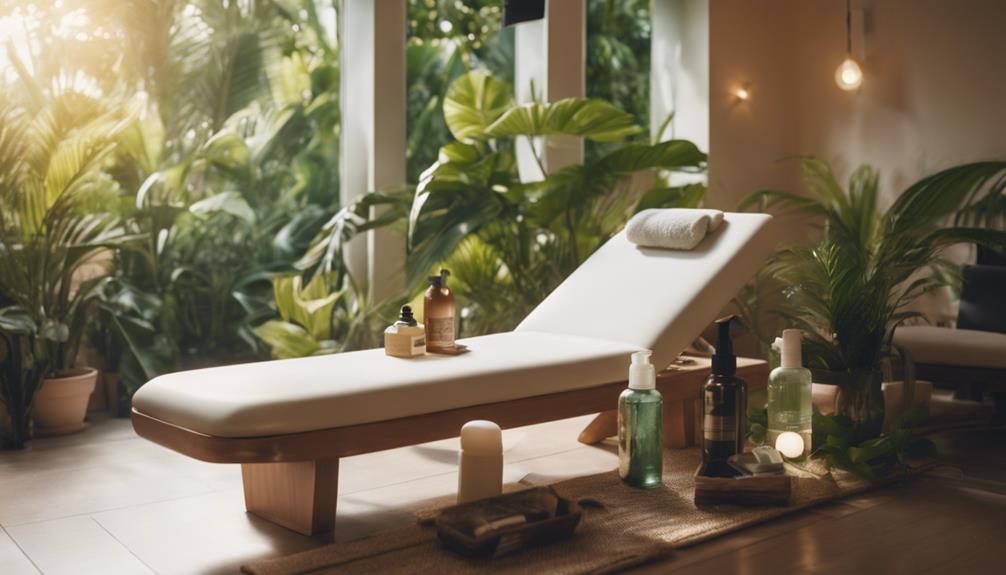In order to ensure safe use of tanning beds, it is important to first understand your skin type and how sensitive it is to UV rays. Check for any medications that may increase your risk of burning and always wear protective goggles. Begin with short tanning sessions, lasting around 3-5 minutes, to gauge your skin’s response. Opt for indoor tanning lotions with moisturizing ingredients such as aloe vera. Be sure to moisturize your skin afterwards to maintain its health and vitality. Remember to space out your tanning sessions to prevent overexposure. Prioritizing the health of your skin is crucial, and there are additional important factors to consider in order to ensure a safe and effective tanning experience.
Key Takeaways
- Know your skin type to tailor tanning sessions and minimize burn risk.
- Always wear UV-blocking goggles to protect your eyes during tanning.
- Start with short tanning sessions to assess skin tolerance and avoid overexposure.
- Use indoor tanning lotions with hydrating ingredients to protect and nourish your skin.
Understanding Your Skin Type
Understanding your skin type is essential for tailoring your tanning routine and minimizing the risk of sunburn or skin damage.
Start by evaluating your skin's natural tone and sensitivity to the sun. If you have fair skin, you'll need to be cautious, as you're more prone to burns. Medium skin types may tolerate longer sessions, while darker skin can handle more UV exposure.
Consult a tanning expert for personalized advice, ensuring your routine suits your unique needs.
Before tanning, prepare your skin by showering, shaving, and exfoliating at least a day prior. Use a non-oil-based moisturizer to hydrate, and remember to remove makeup and jewelry.
Prioritize your skin health while achieving that sun-kissed glow!
Being Aware of Medications

Before hitting the tanning bed, it's vital to be aware of any medications you're taking that could increase your skin's sensitivity to UV rays. Certain prescriptions, like antibiotics and some acne treatments, can make your skin more prone to burns.
It's important to check with your healthcare provider about any potential risks associated with tanning. They can help you identify medications that might pose a problem.
Always keep your skin hydrated and wear protective eyewear during your sessions. Staying informed about how medications interact with UV exposure will help you enjoy a safer tanning experience.
Essential Protective Measures
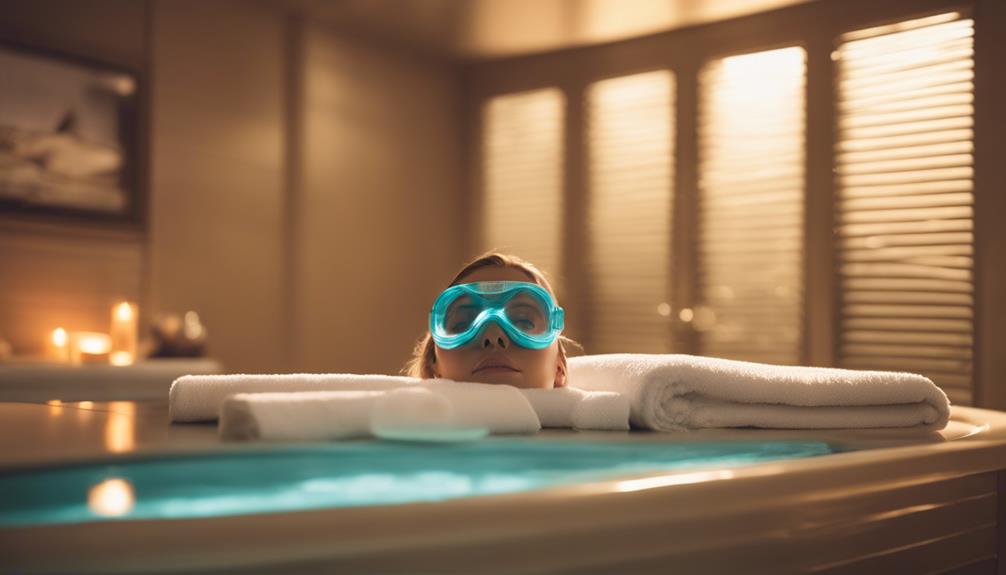
To guarantee your safety while tanning, always wear protective clothing and eyewear designed to shield your skin and eyes from harmful UV rays. Using UV-blocking goggles is essential for eye safety, while snug swimwear helps prevent uneven tanning. Tanning stickers can also assist you in monitoring your bronzing progress. Here's a quick reference for protective measures:
| Protective Measure | Purpose |
|---|---|
| UV-blocking goggles | Protects eyes from harmful UV rays |
| Snug swimwear | Prevents uneven tan |
| Tanning stickers | Monitors bronzing progress |
| Moisturizing lotion | Keeps skin hydrated during tanning |
| Follow salon dress code | Guarantees ideal comfort and safety |
Choosing Tanning Lotions Wisely
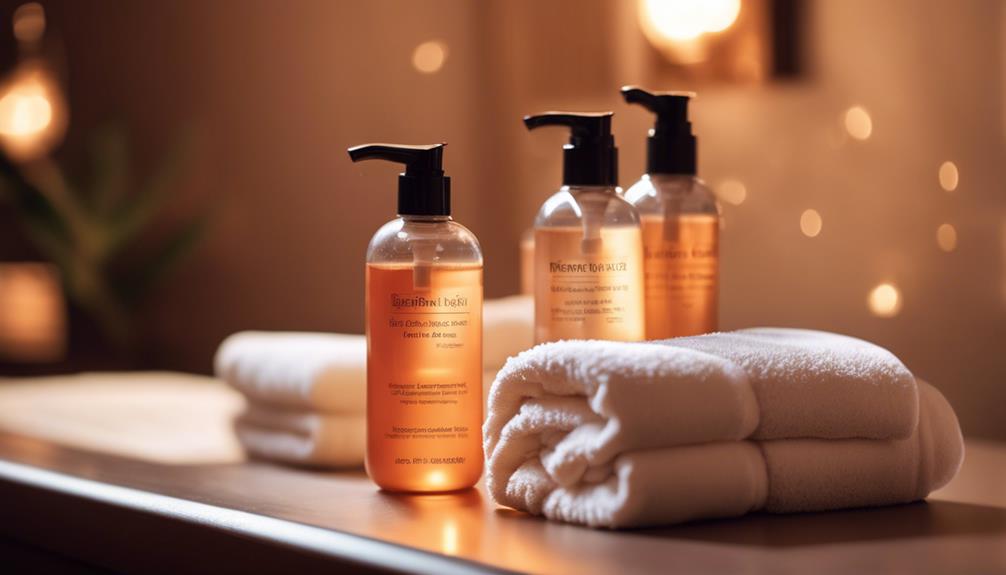
Selecting the right tanning lotion is essential for enhancing your indoor tanning experience and ensuring skin health.
Choose lotions specifically designed for indoor tanning, as these products hydrate and protect against dryness. Look for ingredients like aloe vera, vitamins, and natural oils, which nourish your skin while enhancing your tan.
If you want deeper color, consider lotions with bronzers that boost melanin production. When applying, use circular motions for even distribution, paying extra attention to dry areas.
Avoid using lotions not formulated for tanning beds, as they can cause damage. Remember, the right product not only improves your tan but also supports your skin's overall health during your tanning sessions.
Guidelines for Tanning Sessions
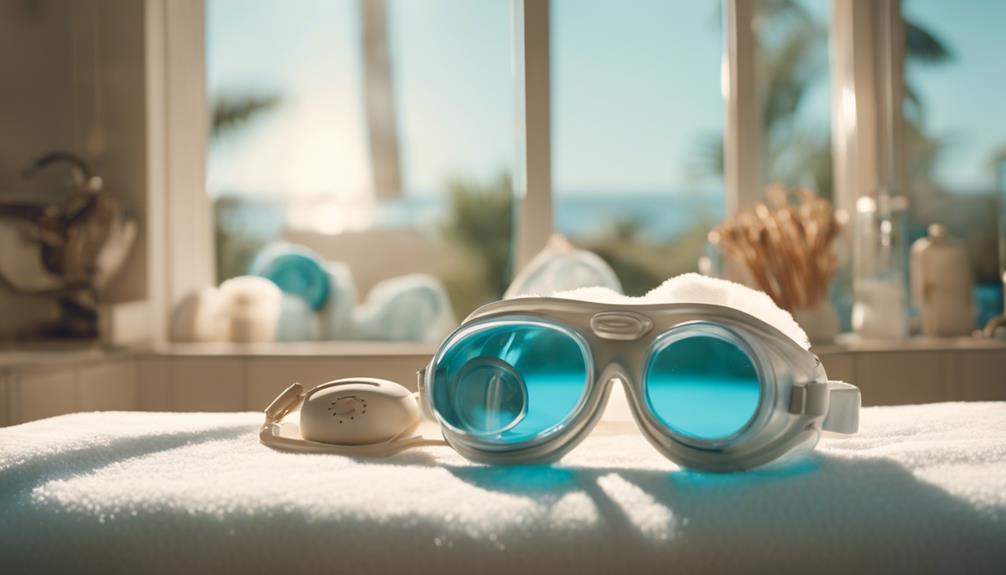
Understanding your skin's UV tolerance is essential for enjoying safe and effective tanning sessions. Always start with short sessions, around 3-5 minutes, especially if you're new to tanning. This way, you can gauge how your skin reacts and gradually increase the duration based on your skin's response.
Remember to wear protective goggles during each session to shield your eyes from harmful rays. Keep a close eye on your skin for any signs of irritation.
- Monitor your skin's reaction closely after each session.
- Space out your tanning sessions to avoid overexposure.
Following these guidelines will help you achieve the tan you desire while prioritizing your skin's health.
Post-Tanning Skin Care
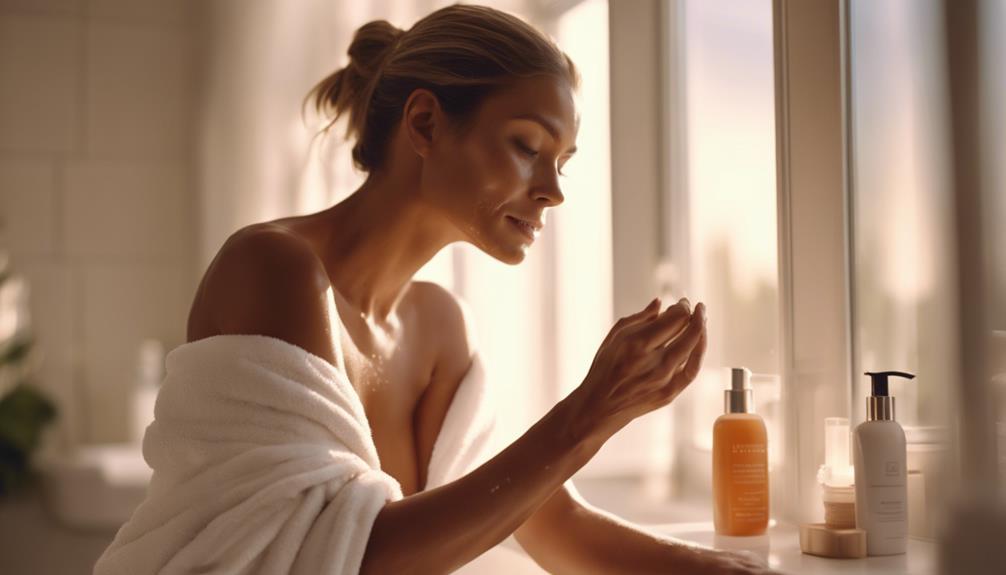
After enjoying your tanning session, focusing on post-tanning skin care is key to maintaining your glow and keeping your skin healthy.
Start by hydrating your skin with a rich moisturizer to lock in moisture and prolong your tan. Aloe vera is an excellent choice for soothing any irritation and enhancing your color.
Avoid harsh soaps or scrubs that can strip away your tan; instead, opt for gentle cleansers.
Don't skip sunscreen when heading outdoors, as your skin remains sensitive to UV rays post-tanning.
Regularly moisturizing will help preserve your tan and keep your skin looking radiant.
Best Safety Practices
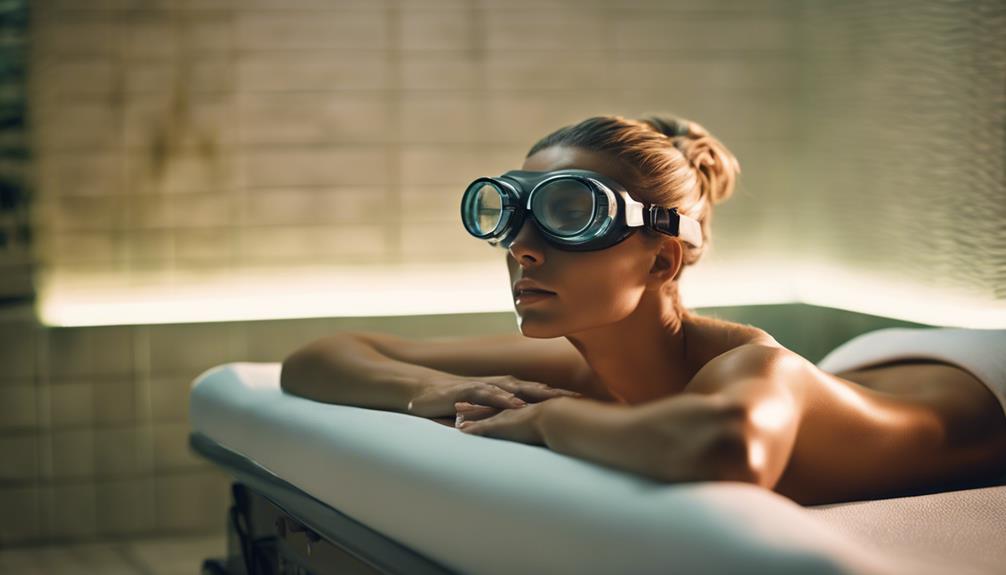
To guarantee a safe tanning experience, always prioritize skin health and follow recommended guidelines for UV exposure.
Start by knowing your skin type and adjusting your tanning routine accordingly. It's essential to wear protective eyewear during sessions to shield your eyes from harmful UV rays. Gradually increase your tanning time to find your skin's tolerance, avoiding overexposure.
- Use quality tanning bed goggles for eye safety.
- Consult a healthcare professional about any medications that may increase skin sensitivity.
Frequently Asked Questions
How Often Should I Tan for Optimal Results?
To achieve ideal results, you should tan 2-3 times a week, allowing your skin time to recover between sessions. Pay attention to your skin's response and adjust frequency accordingly to avoid overexposure.
What Are the Signs of Overexposure to UV Rays?
When you overexpose your skin to UV rays, you might notice redness, itching, peeling, or blistering. If you experience any of these signs, it's essential to stop tanning and give your skin time to heal.
Can I Tan if I Have a Sunburn?
While it might be tempting to seek a golden glow, you shouldn't tan with a sunburn. Your skin needs time to heal, and exposing it further can lead to increased irritation and long-term damage.
Are There Age Restrictions for Tanning Bed Usage?
Yes, most tanning salons enforce age restrictions, typically requiring users to be at least 18 years old. Always check local regulations and salon policies to guarantee you're following the rules before tanning.
How Do I Clean My Tanning Bed Goggles?
Imagine you just finished a tanning session. To clean your goggles, use a gentle soap and water solution, rinse thoroughly, and air dry. This prevents buildup and guarantees clear vision for your next tanning experience.
Are the Safety Tips for Tanning Beds the Same as for Safe Tanning Outdoors?
When it comes to tanning, essential tanning safety tips are crucial whether you’re using a tanning bed or spending time outdoors. Always wear sunscreen, limit your exposure, avoid peak times, and stay hydrated. Overexposure to UV rays can lead to serious skin damage, so safety precautions are key.
Conclusion
By following these essential tanning bed safety tips, you can enjoy a beautiful glow while prioritizing your skin's health. Additionally, always wear protective eyewear to shield your eyes from the UV rays emitted by tanning beds. It’s also important to limit your tanning bed sessions to prevent overexposure, as prolonged UV exposure can increase the risk of skin damage and skin cancer. By following these tanning bed safety tips and skin safety tips, you can achieve a radiant tan while safeguarding your skin’s well-being.
Did you know that indoor tanning can increase your risk of skin cancer by 75%? This stark statistic highlights the importance of being informed and cautious.
Remember to assess your skin type, stay mindful of medications, and choose the right products for your sessions.
With the right approach, you can confidently embrace your tanning journey while protecting your skin.




